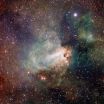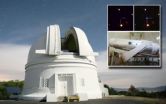(Press-News.org) Cold Spring Harbor, NY – A clinically extensive and mathematically powerful study of 1000 families with one autistic child and one unaffected sibling has validated a controversial theory of autism's complex genetic causation. The study for the first time estimates the minimum number of locations in the human genome -- 250 to 300 -- where gene copy number variation (CNV) can give rise to autism spectrum disorder (ASD). It also sheds new light on the long observed but little understood "gender bias" of autism, an illness that typically manifests by age 3 and affects about four times more boys than girls.
The study, along with an accompanying paper exploring the possible brain and neuronal pathologies to which the observed CNVs and other genetic anomalies may give rise, appears June 9 in the journal Neuron. The work was led by Professor Michael Wigler of Cold Spring Harbor Laboratory (CHSL), a pioneer in the analysis of genomes and a developer of key technologies that have made such analysis possible, in collaboration with Dennis Vitkup of Columbia University; Dan Levy, Michael Ronemus, Ivan Iossifov and Sarah Gilman of CSHL; and others.
"The causes of autism when fully fleshed out are likely to be very diverse," Wigler says, "some of which may be treatable much more readily than others. However, the diversity of causes implies that an effective future treatment for one form of ASD may be specific only for a narrow subset of those affected."
Four years ago, Wigler and colleagues began to publish findings about the genetics of autism that surprised many experts in the field. Among other things, they noted the prevalence of "de novo" genetic mutations in affected children. These are mutations that did not appear in either parent and hence must have arisen spontaneously. In 2008, Wigler proposed that such cases, characterized by changes in gene copy number -- duplicated or deleted genome segments that leave an individual with extra or missing copies of one or more genes -- likely account for at least half of ASD cases.
There is little doubt that certain genetic mutations carried by an unaffected parent can be transmitted to a child and cause the illness. Wigler, however, proposed a "unified theory" of autism genetics that suggested such cases only account for about 25% of the total.
Rare and ultra-rare CNVs – and their possible biological consequences
The new study affirms the team's earlier data on the relative importance of non-inherited, spontaneously occurring CNVs as likely causal factors in autism. Using a newly assembled sample population called the Simons Simplex Collection which included about 1000 families, consisting of both birth parents and in most cases two children, one with ASD and the other unaffected, Wigler and colleagues saw the earlier-observed effect, only "this time on a much larger scale." The new sample collection is deemed very important by the research team. It intentionally excludes families with more than one child with ASD ("multiplex families") since such cases are almost always inherited. A sample composed only of "simplex" families makes possible a much more accurate comparison of the relative frequency of spontaneous and inherited causal mutations.
Using a refined version of a technique called comparative genomic hybridization, but using detection devices called microarrays that were about four times as powerful as those used in prior studies, along with a suite of powerful quantitative analysis tools, the team was able to consistently resolve much smaller genomic irregularities than previously possible. This revealed a significantly greater number of genome areas where spontaneous DNA deletions and duplications "hit" genes thought to contribute substantially to ASD.
The team estimates a minimum of 250 to 300 places in the genome where CNVs give rise to ASD. Most of the CNVs were only seen once and are classified, individually, as rare. This is a potential source of confusion since these rare events, taken in total, are the source of at least half of all autism, if Wigler's theory is correct.
As the team notes in their paper, it is still very difficult to make the connection between the areas that the de novo CNVs hit and the genes these areas harbor. Nor is it clear what role those genes have in perturbing the biology of the developing brain, giving rise to autism. In the associated paper, Vitkup, Iossifov and others use a novel form of analysis called NETBAG (network-based analysis of genetic associations) to identify "the large biological network of genes affected by rare de novo CNVs in autism." They note that this network is strongly related to genes previously implicated in studies of autism and intellectual disability. And they specify they relate primarily to the development of synapses, the junctions between brain cells which are their transmission nodes; as well as the targeting of axonal fibers and the ability of young neurons to migrate. All are essential aspects of brain development.
Explaining gender skew and apparent female 'resistance' to autism
Subsequent sequence-based studies should be able to further resolve individual genes within the CNV regions, and significantly expand the list of candidate genes for autism. Even now, however, the data on spontaneous CNVs and a separate but also an important class of "ultra-rare" CNVs that were inherited by some of the affected children in the sample, reveal interesting and in some cases vexing "asymmetries," the team reported.
Among these asymmetries: spontaneous causal CNVs were found in 8% of the affected children in the sample; this is four times their rate of occurrence in unaffected siblings. Since CNVs occur with equal frequency across the human population – we all have them, but in most of us the missing or extra genetic material doesn't hit essential genes or contribute to illness – the fact that they are seen four times as often in affected children as in their unaffected siblings points to their likely contributory role in the illness.
Another striking asymmetry: when spontaneous CNVs contributing to autism were seen in girls, they tended to be much larger and hit many more genes -- 15 genes per CNV on average for girls vs. only 2 for boys. This touches on three observed phenomena: the preponderance of boys who become symptomatic; the preponderance of boys who have ASD but are "high-functioning"; and the comparative severity of the illness when it does occur in girls.
Since girls and boys are equally susceptible to DNA damage and new mutation -- the rate of new mutation that damages a gene in humans is about one gene per three births -- they should each have about the same number of CNVs. Presuming this is the case, why do more boys than girls develop ASD? And why are the observed CNVs in girls larger?
Wigler hypothesizes that females are in some manner "resistant" to autism, and that it takes a much larger, more devastating genomic hit to induce pathology in girls as compared with boys. The cause of this apparent female resistance to comparatively small genetic hits remains one of autism's mysteries.
It has been speculated that unequal rates of brain development in the sexes may account for the smaller number of females with ASD. Wigler's team discusses this possibility, noting that females "have an accelerated timescale for a number of cognitive milestones, for example, their first words at an earlier age. A quicker pace of development might reflect a robustness that offers females protection."
Another mystery concerning gender draws attention to the status of adult women of child-bearing age who might be considered "carriers." These would be women whose genomes contain transmissible mutations that can cause autism, yet who do not themselves manifest symptoms of ASD. The team speculates that the "high-risk" autism genes they carry may generate other effects in these women. They "may encounter difficulties at later stages of their lives that manifest as a different diagnostic category, or one that reduces fecundity." If this is true, the disorder is "most likely to be one with a gender bias opposite that of ASD," such as anorexia nervosa, Wigler proposes.
The team's next insights about autism genetics will be made possible by a major technological advance -- a shift from microarray detection of CNVs to the sequencing of the gene-encoding portions of the genome, or "exome," of families in the Simons Simplex Collection (which will expand to include 3000 families). This work and work at other institutions of a similar nature should "crack open the field of autism genetics in two years," says Wigler, whose own team has been gearing up for the sequencing phase during the last year.
###
"Rare de novo and transmitted copy number variation in autistic spectrum disorders" will be published June 9 in Neuron. The authors are: Dan Levy, Michael Ronemus, Boris Yamron, Yoon-ha Lee, Anthony Leotta, Jude Kendall, Steven Marks, B. Lakshmi, Deepa Pai, Kenny Ye, Andreas Buja, Abba Krieger, Seungtai Yoon, Jennifer Troge, Linda Rodgers, Ivan Iossifov and Michael Wigler.
"Rare de novo variants associated with autism implicate a large functional network of genes involved in formation and function of synapses" will be published June 9 in Neuron. The authors are: Sarah R. Gilman, Ivan Iossifov, Dan Levy, Michael Ronemus, Michael Wigler and Dennis Vitkup.
Autism study validates importance of spontaneous causal mutations and sheds new light on gender skew
Genetic causation of ASD appears to be highly diverse; Thoughts on why fewer girls have autism
2011-06-09
ELSE PRESS RELEASES FROM THIS DATE:
Archive Systems Expands to Provide Records Management Services to the Washington DC Metro Area
2011-06-09
Archive Systems, Inc., a leading provider of records and document management services, today announced that it has launched a new business records facility serving the Washington DC metro area. The facility offers advanced solutions to help companies go paperless along with traditional records management services such as business records storage, document destruction and offsite data protection.
"We are thrilled to be opening another new location in 2011 as we continue to increase our national footprint. This growth is a testament to our vision for the future of ...
First images from the VLT survey telescope
2011-06-09
The VLT Survey Telescope (VST) is the latest telescope to be added to ESO's Paranal Observatory in the Atacama Desert of northern Chile. It is housed in an enclosure immediately adjacent to the four VLT Unit Telescopes on the summit of Cerro Paranal under the pristine skies of one of the best observing sites on Earth. The VST is a wide-field survey telescope with a field of view twice as broad as the full Moon. It is the largest telescope in the world designed to exclusively survey the sky in visible light. Over the next few years the VST and its camera OmegaCAM will make ...
Boden Wins Loyalty Award
2011-06-09
Boden, the multichannel retailer of apparel and accessories, emerged victorious as the CRM/Loylty category winner of Marketing Week's second Engage Awards. Announced at a glittering ceremony at the Grosvernor House Hotel in London, members of the Boden team were delighted by the recognition by judges and peers for their innovative CRM efforts.
The award-winning "Love Story" campaign featured personalised mailing, addressed to a customer's first name with a J Loves logo at the front. A fold-out spread was completely unique to each customer based on their shopping ...
Researchers solve membrane protein mystery
2011-06-09
MADISON – A University of Wisconsin-Madison research team has solved a 25-year mystery that may lead to better treatments for people with learning deficits and mental retardation.
Synaptophysin is the first protein and most abundant ever found on the membranes surrounding the tiny sacs that carry chemical messengers to synapses, the gaps where communication between nerve cells occurs. But even though the loss of synaptophysin has recently been linked to learning deficits and mental retardation, scientists have been unable for more than a quarter-century to explain what ...
Planet's soils are under threat warns University academic
2011-06-09
The planet's soils are under greater threat than ever before, at a time when we need to draw on their vital role to support life more than ever, warns an expert from the University of Sheffield today (9 June 2011) in the journal Nature.
Professor Steve Banwart from the University's Kroto Research Institute, will be helping to tackle this challenge as part of a new programme of international research, called Critical Zone Observatories (CZOs), funded initially by the USA National Science Foundation and the European Commission.
In some parts of the world, losses due ...
Boden Reaps Success With Innovative Catalogue Campaign
2011-06-09
Clothing retailer Boden reported a doubling of response on its latest enquirer conversion campaign in Summer 2011. Investment in an integrated multichannel approach to enquirer mailings with high level of personalisation paid off with improved ROI compared to past campaigns.
In May, Boden mailed Royal Wedding themed postcards to its enquirers, each featuring a personalised URL leading to a tailored micro site. Visitors were able to enter a competition to instantly win GBP1,000 worth of Boden clothing. Those that weren't lucky enough to scoop the prize were awarded with ...
Breast cancer drug pushes colon cancer cells to their death
2011-06-09
A new treatment for colon cancer that combines a chemotherapy agent approved to treat breast cancer and a cancer-fighting antibody is ready for clinical trials, according to Penn State College of Medicine researchers.
More than 150,000 cases of colorectal cancer are diagnosed each year, and about 50,000 people die from colorectal cancer yearly. Currently there are limited chemotherapy treatments for colorectal cancer with little that has been in the pipeline in recent years.
Wafik S. El-Deiry, M.D. Ph.D., American Cancer Society Research Professor and Rose Dunlap Professor ...
Water's surface not all wet
2011-06-09
Air and water meet over most of the earth's surface, but exactly where one ends and the other begins turns out to be a surprisingly subtle question.
A new study in Nature narrows the boundary to just one quarter of water molecules in the uppermost layer – those that happen to have one hydrogen atom in water and the other vibrating freely above.
Such molecules straddle gas and liquid phases, according to senior author Alexander Benderskii of the University of Southern California: The free hydrogen behaves like an atom in gas phase, while its twin below acts much like ...
Two Exciting Workshops Being Held in Conjunction With the 2011 STEMtech Conference
2011-06-09
The League for Innovation in the Community College has announced that two exciting workshops will be offered in conjunction with the 2011 STEMtech conference being held October 2-5, at the JW Marriott Indianapolis. Educators, industry leaders, and others will gather to discuss increasing student access into and success in science, technology, engineering, and mathematics (STEM) majors and careers. The 2011 STEMtech conference will also help educators explore the strategic use of information technology to better serve their students, campuses, and communities. Complete conference ...
Caltech-led astronomers find a new class of stellar explosions
2011-06-09
PASADENA, Calif.-They're bright and blue-and a bit strange. They're a new type of stellar explosion that was recently discovered by a team of astronomers led by the California Institute of Technology (Caltech). Among the most luminous in the cosmos, these new kinds of supernovae could help researchers better understand star formation, distant galaxies, and what the early universe might have been like.
"We're learning about a whole new class of supernovae that wasn't known before," says Robert Quimby, a Caltech postdoctoral scholar and the lead author on a paper to be ...
LAST 30 PRESS RELEASES:
Tracing the quick synthesis of an industrially important catalyst
New software sheds light on cancer’s hidden genetic networks
UT Health San Antonio awarded $3 million in CPRIT grants to bolster cancer research and prevention efforts in South Texas
Third symposium spotlights global challenge of new contaminants in China’s fight against pollution
From straw to soil harmony: International team reveals how biochar supercharges carbon-smart farming
Myeloma: How AI is redrawing the map of cancer care
Manhattan E. Charurat, Ph.D., MHS invested as the Homer and Martha Gudelsky Distinguished Professor in Medicine at the University of Maryland School of Medicine
Insilico Medicine’s Pharma.AI Q4 Winter Launch Recap: Revolutionizing drug discovery with cutting-edge AI innovations, accelerating the path to pharmaceutical superintelligence
Nanoplastics have diet-dependent impacts on digestive system health
Brain neuron death occurs throughout life and increases with age, a natural human protein drug may halt neuron death in Alzheimer’s disease
SPIE and CLP announce the recipients of the 2025 Advanced Photonics Young Innovator Award
Lessons from the Caldor Fire’s Christmas Valley ‘Miracle’
Ant societies rose by trading individual protection for collective power
Research reveals how ancient viral DNA shapes early embryonic development
A molecular gatekeeper that controls protein synthesis
New ‘cloaking device’ concept to shield sensitive tech from magnetic fields
Researchers show impact of mountain building and climate change on alpine biodiversity
Study models the transition from Neanderthals to modern humans in Europe
University of Phoenix College of Doctoral Studies releases white paper on AI-driven skilling to reduce burnout and restore worker autonomy
AIs fail at the game of visual “telephone”
The levers for a sustainable food system
Potential changes in US homelessness by ending federal support for housing first programs
Vulnerability of large language models to prompt injection when providing medical advice
Researchers develop new system for high-energy-density, long-life, multi-electron transfer bromine-based flow batteries
Ending federal support for housing first programs could increase U.S. homelessness by 5% in one year, new JAMA study finds
New research uncovers molecular ‘safety switch’ shielding cancers from immune attack
Bacteria resisting viral infection can still sink carbon to ocean floor
Younger biological age may increase depression risk in older women during COVID-19
Bharat Innovates 2026 National Basecamp Showcases India’s Most Promising Deep-Tech Ventures
Here’s what determines whether your income level rises or falls
[Press-News.org] Autism study validates importance of spontaneous causal mutations and sheds new light on gender skewGenetic causation of ASD appears to be highly diverse; Thoughts on why fewer girls have autism


